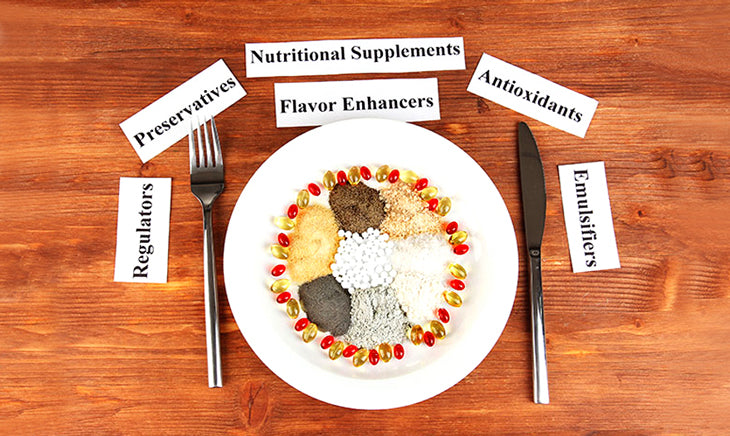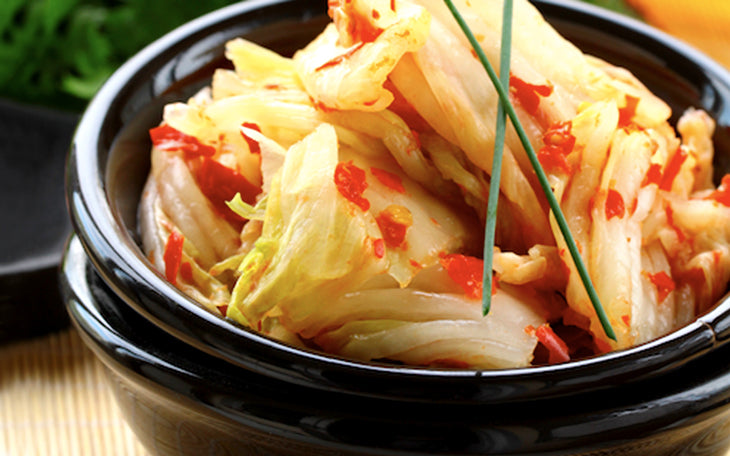- Continue Shopping
- Your Cart is Empty
Paleo & Food Preservation
It’s common knowledge that the chemically synthesized preservatives found in many of our store bought foods these days are not that good for you. Paleo eaters recognize the importance of eating real food and do their best to avoid these preservatives.

But, being able to preserve food can be really useful! It can make it easier to eat locally grown produce, and to not be constantly dependent on carbon-footprint heavy imports. And if you’re not living in an area of the world which is sun-soaked year round, there are times when there just isn’t any fresh and local seasonal produce to be had.
Many paleo eaters are returning to the ancestral art of food fermentation as a means of preserving seasonal produce. Fermentation not only preserves your food nearly indefinitely, but it also has the added benefit of loading your diet with probiotic bacteria, increasing the bioavailability of the nutrients in your food, while simultaneously enriching your palate with delicious new flavors.
Where does food fermentation come from?
Fermented foods have been around for a long time. In fact, pretty much EVERY culture in the world has evolved their own fermented food or drink tradition.

It makes complete sense when you think about it. After all, the most common western method of food preservation today, in-home refrigeration, has been available for just under 100 years. Before that, fermentation was the go-to powerful weapon in the food preservation arsenal.
Humans have fermented vegetables by pickling, and preserved dairy with milk kefir and yogurt cultures for generations. Cabbage is perhaps the 2nd most popular fermented food, in the form of sauerkraut or kimchi. Fermented fish traditions exist from Scandinavia to Japan (Lutefisk to Funazushi). If you’ve been to europe, you’re probably familiar with the famous Jamón Iberico (ham) of Spain, and of course salami. And in Africa, a variety of fermented breads are commonly eaten, from fufu to injera.
These are just a few of examples of fermented food traditions which have been with us for 1000s of years. And the western world is now beginning to reclaim these foods for a variety of health related reasons.
Health Benefits of Fermented Foods
Fermented foods are chock full of probiotics, bacteria which are beneficial to the human organism. Once these feisty yeasts and bacteria establish themselves as the dominant culture in your food, they create a self-sterilizing, acidic environment which is inhospitable to any invading bad, pathogenic bacteria strains, keeping your food safe.

While they’re living in your food, these probiotics start eating it in a process we know as fermentation. Now, maybe some of you are thinking: “What?! Eating my food? Why should I share my hard-earned produce with these freeloading bacteria?”
Not to worry. They wind up mostly consuming the sugars you can’t eat yourself. In fact, they’re doing you a big favor by breaking down the cell walls in your plants and making nutrients and vitamins even more bioavailable than they would be in the raw plants themselves. And it gets even better.
Once you’ve eaten your delicious fermented foods, these probiotics continue to live on in your gut (No worries! This is completely normal! In fact, if you’re healthy you’ve already got trillions of these guys in your GI tract already). From here, they do the same things they did for you while living in your food - they create an inhospitable acidic environment for incoming pathogens, and even eat any surviving bad bacteria.
A recent study has also opened another potential benefit of this means of preservation - while the science is by no means conclusive at this point, there’s evidence that probiotics may aid mental health. While the exact mechanism is not yet clear, one theory suggests that probiotics trigger extra production of serotonin, one of the primary neurotransmitters of well-being.

How can I get started fermenting foods?
People often ask me what kinds of foods can be fermented. I’ve seen it all - you can ferment plants, meats, dairy, eggs… basically anything. Today I’ll be covering the simplest entry into the world of food fermentation, the vegetable ferment.
Click here to download the following quickstart guide to vegetable fermentation as a pdf.
You will need:
- A glass jar with a lid
- Fresh veggies (see below for some of my favorite veggie combos).
- Salt
- A “brine weight” (something to keep your vegetables under the brine within your jar)

Instructions:
- Clean your jar with hot soapy water.
- Wash and cut vegetables up to thickness of your choice and pack in jar tightly. (The bigger the vegetables are, the longer it takes to ferment)
- Mix water with salt to make a brine – dissolve the salt in boiled water. Use the brine to fully cover vegetables in jar/crock
* Optional – if you have brine from a previous ferment, add it as a kick-starter and to mix flavors - Try to find something to cover and push down your vegetables under the brine (salty water) – a cabbage leaf, a clean rock, a glass item, another smaller jar – do not use something metal as the vegetables become more acidic and corrode it.
- The first three days are the most critical. You will notice the vegetables rising up and carbonation building up. ‘Burp’ your jar and push down the vegetables if needed. Don’t close the lid too tight – let the air slightly escape for these first days.
- Keep your ferment in a cool, dark place for approximately 5-10 days (a cupboard, or pantry). Time will vary depending on conditions (the warmer it is or smaller the vegetables are, the faster it ferments).
Taste after the first 5 days and see what you think. If you like them, eat ‘em up or put them in the fridge for up to 6 months! If not, continuing fermenting to let them get sourer.
Here are some of my favorite veggie ferment combos:
- Apple, cabbage & juniper berry
- Kohlrabi & carrot
- Beets, onion, horseradish, dill & garlic
- Cabbage & cranberry
- Carrot, burdock root, parsley root, ginger & red chili flakes
- Green beans, dill, garlic, chili pepper and celery seed
- Cauliflower, spring onion, fresh grated turmeric, ginger and mustard seed.
Have you experimented with food fermentation for preservation and health? What recipes have you used? We’d love to hear what’s bubbling in your kitchen!
About the author:
Alexis Goertz
Alexis is head alchemist over at ediblealchemy.co, the premier online training site for DIY probiotics in the form of fermented foods and drinks. She travels the world in search of exotic bacteria cultures, gives on- and offline workshops, and loves to experiment with creative ferments. She’s picking up her next box of Paleo Treats when she’s back in Winnipeg this Christmas.

Nik Hawks
Nik Hawks helps run the show at Paleo Treats. Fascinated by humans in all their strange glory, Nik is harnessed in and pulling hard in pursuit of excellence with the rest of the PT Crew. Enjoy!







